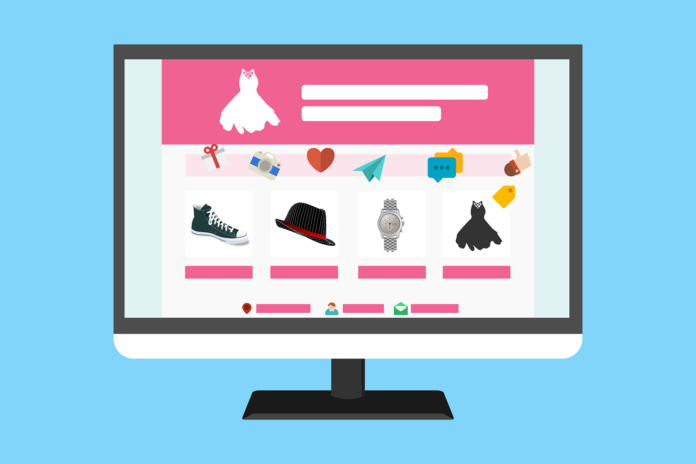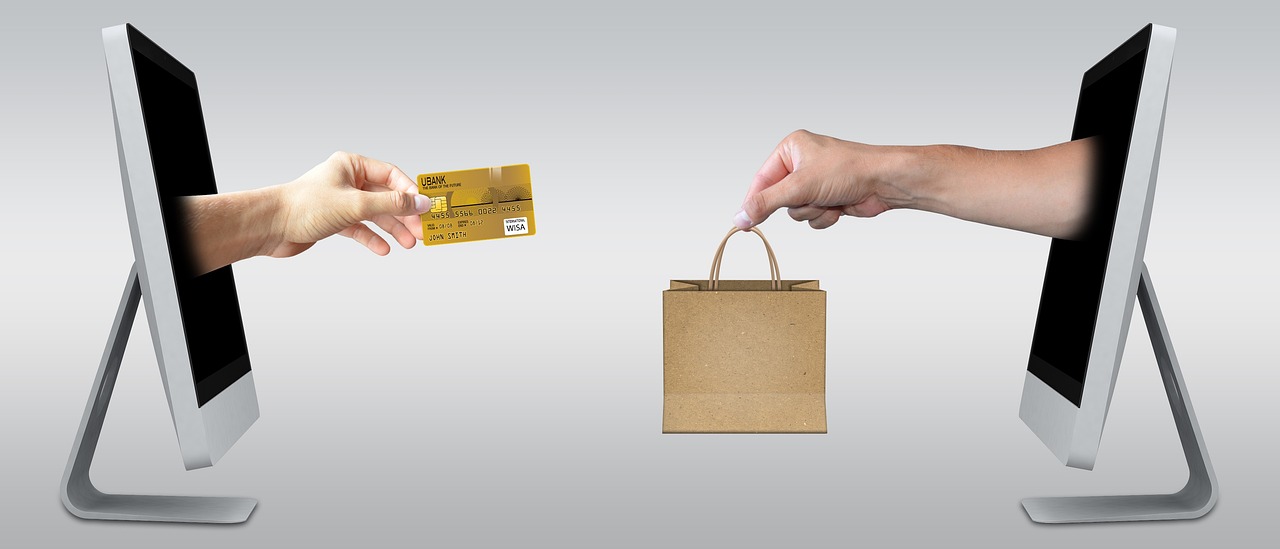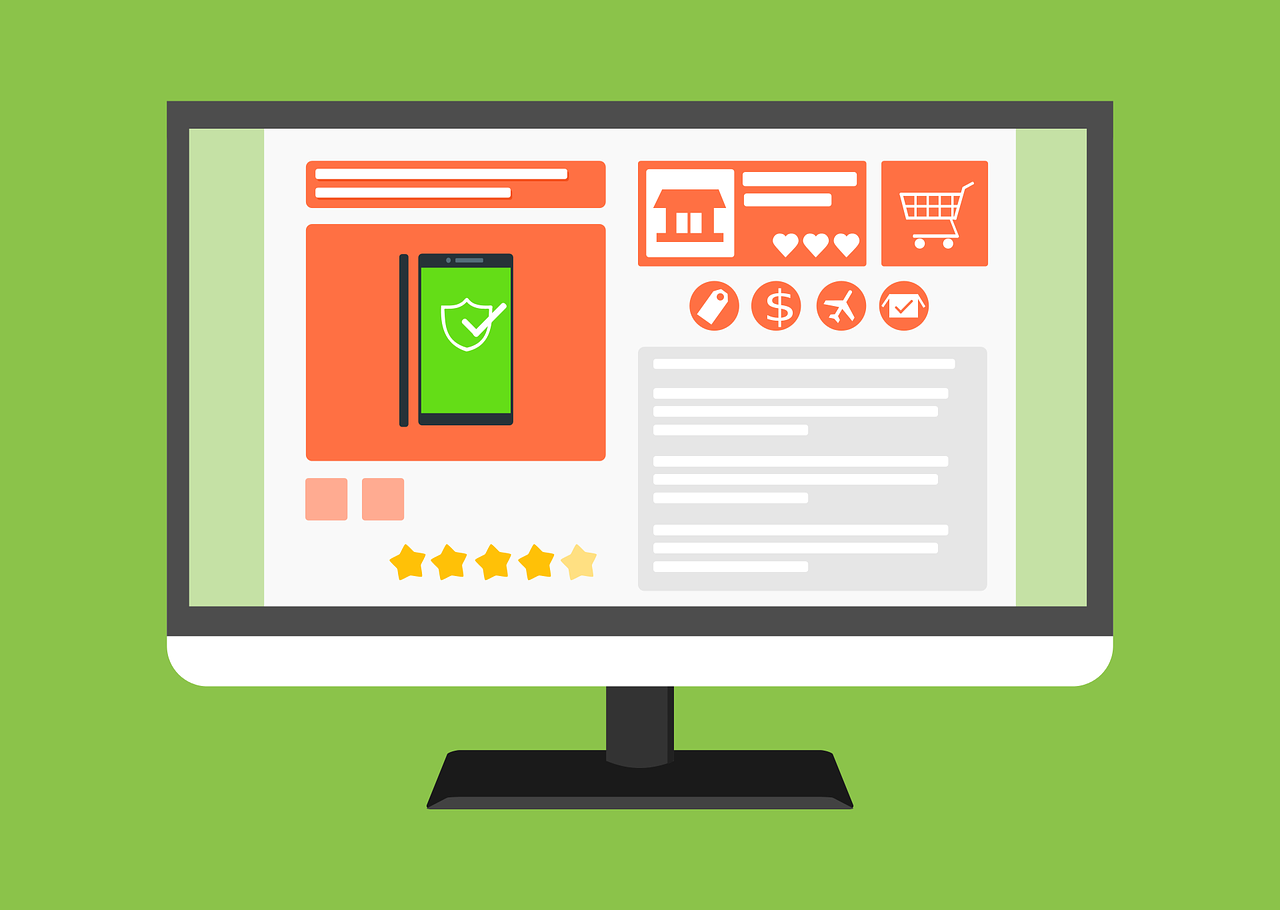Here, I will show you great ideas for selling products online and in stores…
It can be challenging for a small business to simultaneously run brick-and-mortar and online stores simultaneously. Figuring out how to make both areas successful may seem overwhelming when there are many expenses involved and inventory to restock.
Please read below for great ideas on selling products online and in-store while giving both areas of your business the attention they deserve.
Table of Contents
Cross-promote Your Business Areas
Let your customers know they can buy from you online and in-store by cross-promoting each area.
For example, if an online shopper wants to purchase a top from you, such as the Bella + Canvas unisex raw seam crew pullover, include a postcard with the online order letting them know the address of your physical store.
The next time, they may wish to shop in person if they’re nearby. Include the same postcard with in-person purchases so shoppers will know that they can also buy online.
Post your store’s location on your online site’s “Contact Us” page. Include details on the “About Us” page regarding when your brick-and-mortar store opened, when your online store launched, and other details about the history of your business to connect readers with information about your brand.
Hang signage advertising your website address in the physical store, preferably above the checkout area where it’s easy to see.
Offer the same prices online and in-store
Whatever you’re charging online for a particular item, consider setting the same price at your brick-and-mortar location for the same product.
It shows consistency between the two areas, builds trust, and you won’t have shoppers questioning why the prices differ or asking for price adjustments. It also makes it easier for you to remember prices as well.
Make sure to remember to adjust the numbers in both places when you’re changing the prices. One easy way to stay on track during this task is to do a spreadsheet (if that’s your preferred method). Make the first five headers: “Product,” “Current Price,” “New Price,” “Online,” and “In-store.”
List all the products in the first column for prices you want to change. In the next column, fill in the current prices, followed by the new prices in the next columns.
As you adjust each in-store price, check it off on the row of its respective product. Do the same for the online column.
Have exclusives in each place
Consider offering products online that you don’t sell in your brick-and-mortar location and vice versa. If customers know they can expect certain exclusives in the two separate areas, it could be a way to pique their interest, making them potentially want to see what’s available to buy.
If there are breakable products you’ve been wanting to sell, think about offering them as an exclusive in-store item.
There won’t need to be any concern about packing the fragile items carefully for shipping or worrying about them getting damaged while in transit. However, display them in an area of the store where they won’t get accidentally broken.
Lightweight clothing can be a great option for your website as an exclusive product. Items ranging from socks to tank tops in limited edition styles are easy to ship and could be popular depending on their designs.
Whatever exclusive products you offer, please give them a custom, stand-out look that differs from others on the market.
Sell products that are in the same niche.
If you’re a small business, consider keeping the products you sell on your website in the same niche as those you offer in your brick-and-mortar store. For instance, you’re selling electronics on your website.
Your physical store of the same name also sells electronics instead of unrelated items, like sneakers, scarves, or other apparel.
Expanding your brand is good. However, carrying too much inventory or a wide range of products can be overwhelming and costly for a small business. Instead, begin selling items in your brand’s niche and expand as the business grows. This approach may be more beneficial and profitable.
READ ALSO: Starting A Bar: What You Need To Know
Intertwine your website, store, and social media channels for events
Incorporate any events you plan on hosting in your brick-and-mortar store into your website and social media channels. It lets your shoppers take part wherever they are.
For example, let’s say you have a clothing store and want to host a Christmas-in-July event at your location. There might be an elegant evening party with cocktails and hors d’oeuvres, string lights hanging in the space, and Christmas apparel on sale. You may even want to make it a fundraiser for a local charitable organization.
You could consider live streaming the event on your social media channels to let others experience it for themselves, even from a distance. Consider temporarily changing the theme to festive and Christmas-inspired for your online store.
You can indicate that it’s for a Christmas-in-July event and offer holiday apparel at the same discounted price you’re selling it for in your physical store.
Executing an event at your brick-and-mortar location to have it intertwine with your social media channels and online store will require advanced planning.
The earlier you get started, the better. Write a plan for the events you’re considering hosting throughout the year and how to incorporate the themes into all three spaces.
It is demanding to be a small business owner. While meshing your business’s virtual and physical areas will require some forethought, the advertising, marketing, and profitable results are well worth the effort.
Handle one task at a time, starting with writing a plan (and timeline) of how you want to make changes for selling products in your online and physical stores.
Put the high-priority ideas at the top of the list so you take those on, complete them, and move on to the next ones easily. The result will be that both sides of your business, the online and physical store, will begin and continue to grow.
READ ALSO: 20 Best Cybersecurity Business Ideas For Entrepreneurs
Great Ideas For Selling Products Both Online And In Stores: Frequently Asked Questions
What is the easiest product to sell?
There’s no magic bullet, but focusing on products with:
- High Demand & Low Competition: Consider evergreen products people consistently need or trending items with low competition in your market.
- Profit Margin: Choose products with a healthy profit margin after accounting for production, storage, and marketing costs.
- Easy Fulfillment: For online stores, consider products that are lightweight, easy to ship, and less prone to damage.
What category of products sells the most online?
Here are some popular online categories:
- Convenience Items: Busy consumers love the ease of online shopping for everyday essentials (consumables, personal care products).
- Digital Products: E-books, software, and online courses offer easy delivery and high profit margins.
- Unique or Personalized Items: Products with customization options or catering to niche interests can thrive online.
What sells very fast in the USA?
While trends can change, some fast-selling in-store categories include:
- Impulse Buys: Small, affordable items strategically placed near checkout lines can tempt customers into unplanned purchases.
- Seasonal Products: Capitalize on seasonal trends with strategically timed promotions and displays.
- Locally Sourced or Unique Products: Customers appreciate locally-made goods or products not easily found elsewhere.
Remember: Success isn’t just about the product. Consider these factors, too:
- Target Audience: Identify your ideal customer and tailor your product selection and marketing to their needs and interests.
- Competitive Landscape: Research your competitors and find ways to differentiate yourself through product features, customer service, or unique selling propositions.
- Effective Marketing & Branding: Develop a strong brand identity and utilize effective marketing strategies to reach your target audience and generate interest in your products.
Beyond these FAQs, here are some additional tips:
- Offer excellent customer service: Build trust and loyalty by providing a seamless shopping experience, both online and in-store.
- Embrace data and analytics: Use data to track sales trends and customer behavior and identify areas for improvement.
- Stay adaptable: Be willing to adjust your product mix and marketing strategies based on market changes and customer feedback.
A Final Word
By understanding your target market, creating a strong brand presence, and implementing effective sales strategies, you can increase your chances of success selling products online and in stores.
INTERESTING POSTS
About the Author:
Pranjal Bora works as Head of Product Development at Digital Authority Partners.









